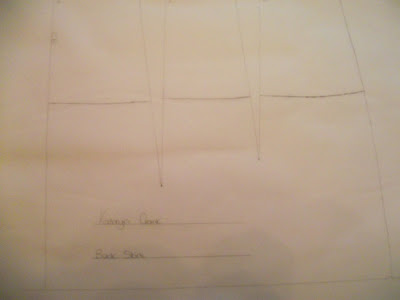In our last Pattern Cutting lesson we looked at skirt facings. As you may remember from my previous posts I attempted one of these on my toile, quite successfully (even if I do say so myself) but I was looking forward to learning how to do it properly.


This is my finished skirt facing. I think that it finishes the skirt of really well instead of using a waistband or a yoke.

When I was making my facing I came across a problem, it was too short. The reason for this mistake was that I hadn't been careful enough when I was closing my darts and with my seam allowance at my zip. This meant that I couldn't sew the edge of the facing into the stitch lines of my zip :(

Solution :) above you can see that I found a way to fix my mistake. I hand sewed the sides down making sure that the stitches couldn't be seen on the front.

This picture shows the facing on the inside of my skirt. As you can see it really neatens up the top edge and just makes the skirt look professional.

This picture shows the interfacing this makes the facing stronger and gave the top of the skirt shape and structure.
This picture shows the Retaining row on my facing. A retaining row helps to hold the facing down and stops it from rolling up while you are wearing the skirt. So I suppose you could say its kinda helpful. As long as you just sew through the facing and the seam allowance and keep it close to the seam line it will look perfect.
 I could definitely use this on my final accessory and I think that it would look quite effective.
I could definitely use this on my final accessory and I think that it would look quite effective.



















 This was the first step. I had to draw the design on.
This was the first step. I had to draw the design on.
 Then I had to sew the design on to create the separate sections that will become the leopard stripes.
Then I had to sew the design on to create the separate sections that will become the leopard stripes.




 I think that the hem has finished the bottom of the skirt really well and makes it look neat and professional.
I think that the hem has finished the bottom of the skirt really well and makes it look neat and professional.













